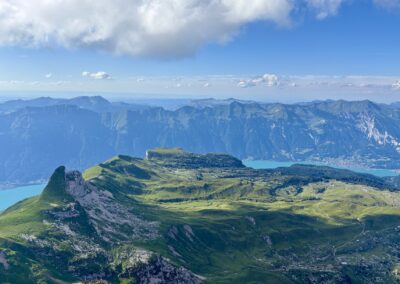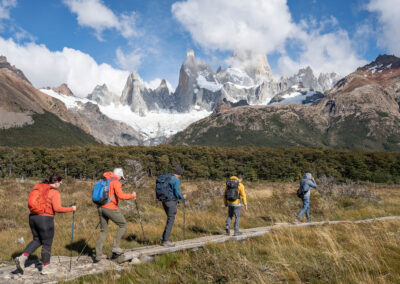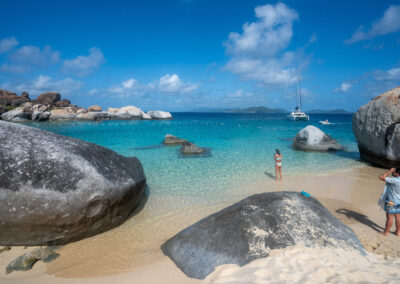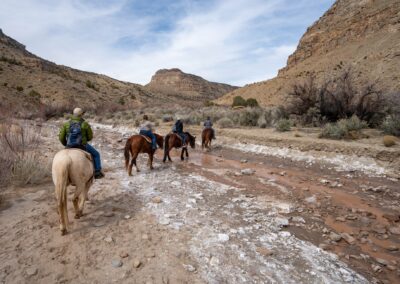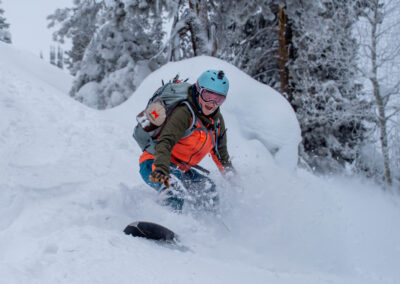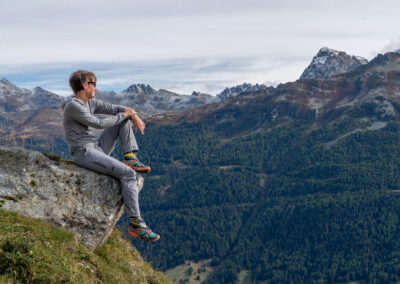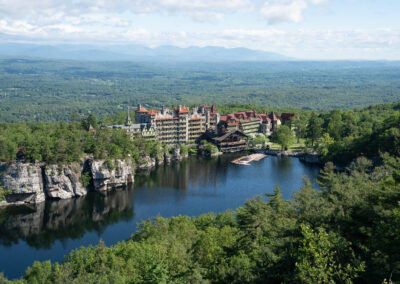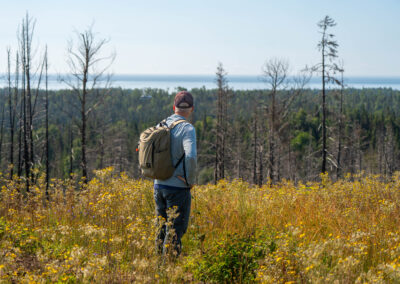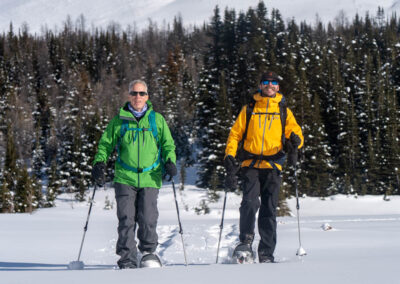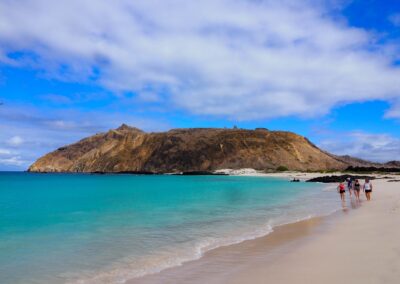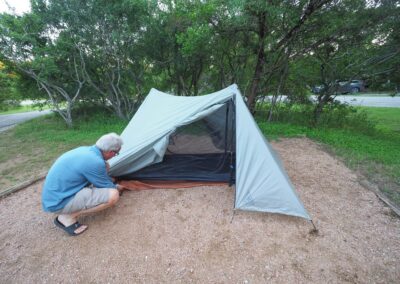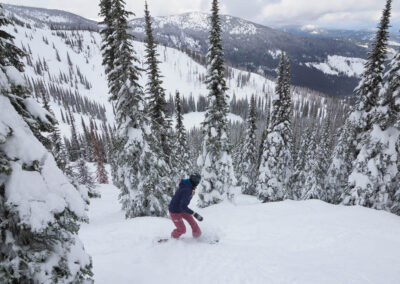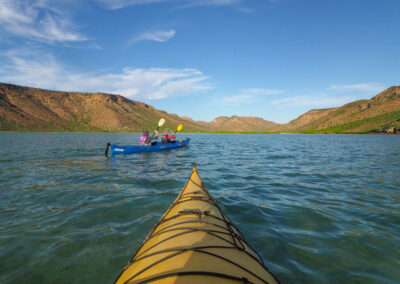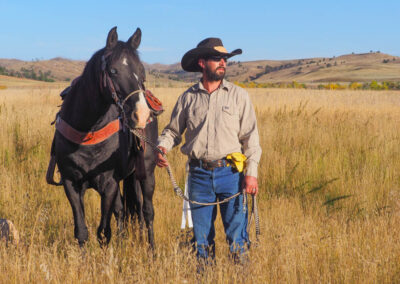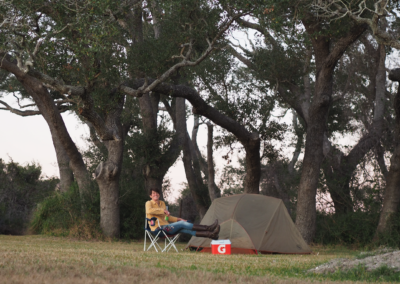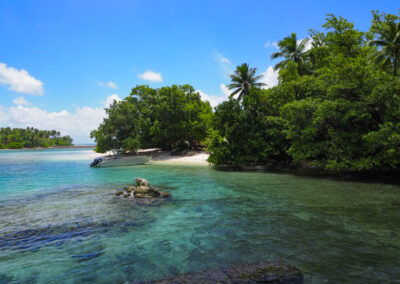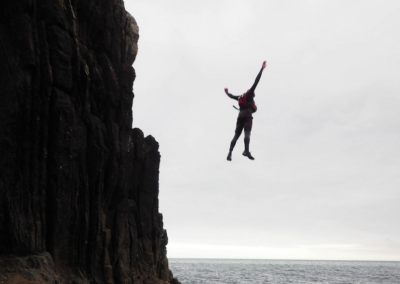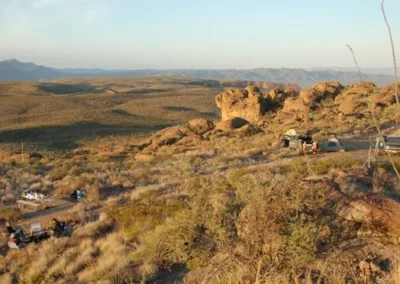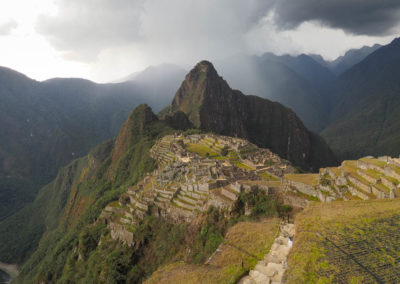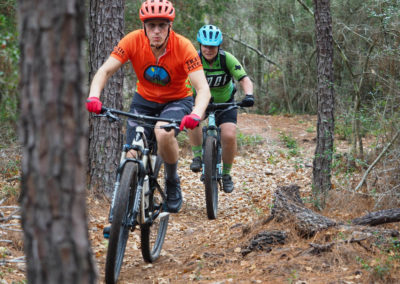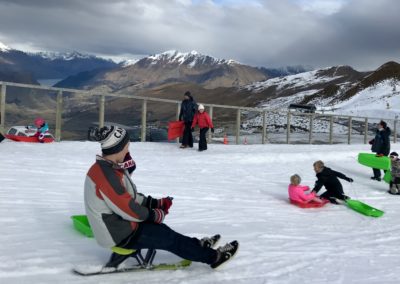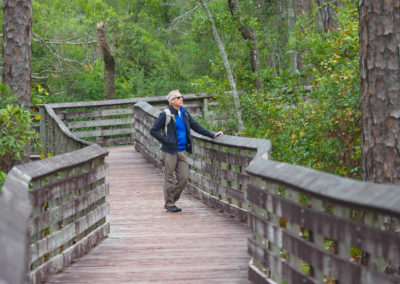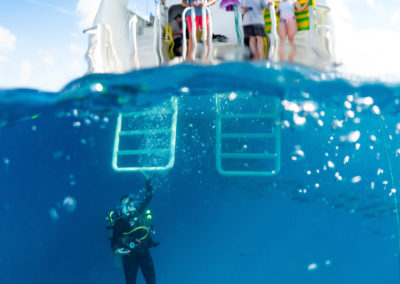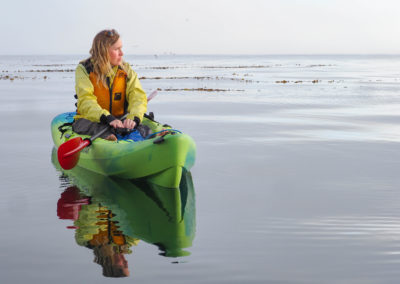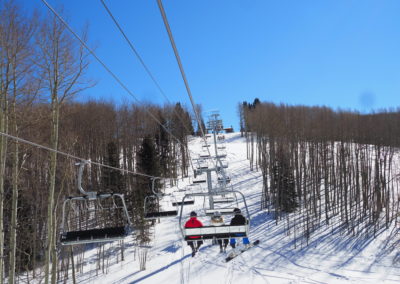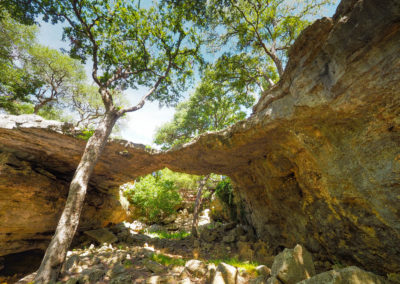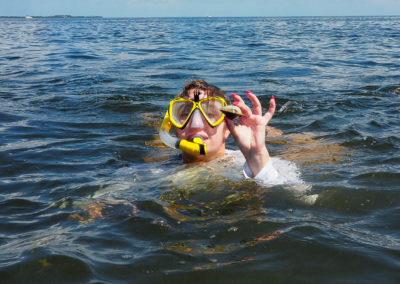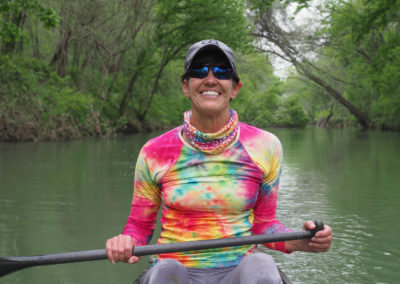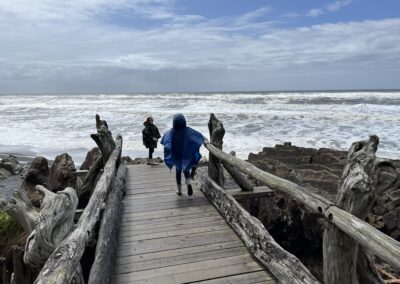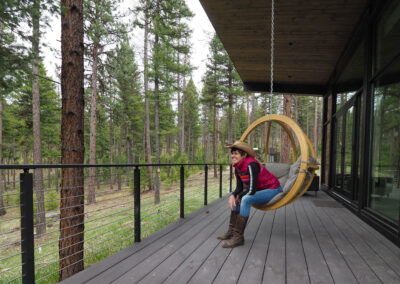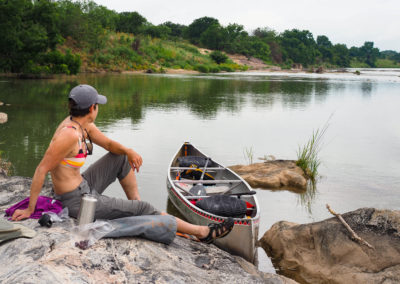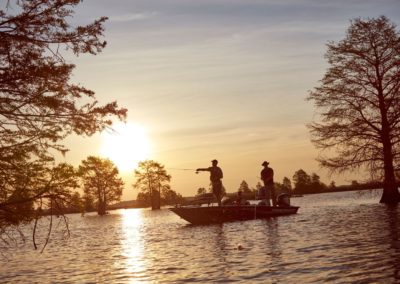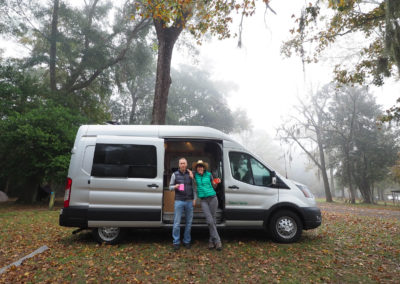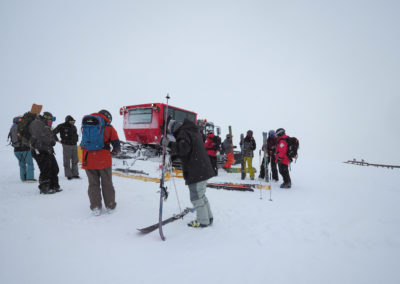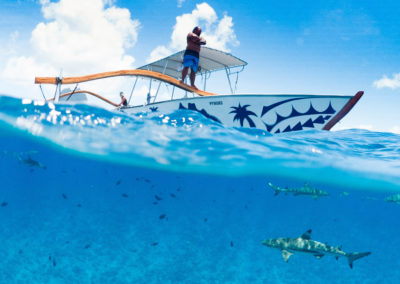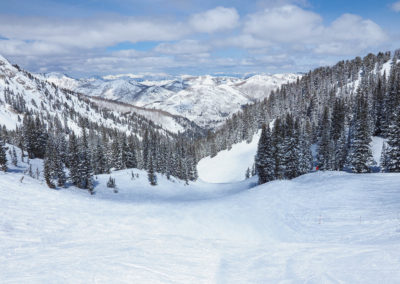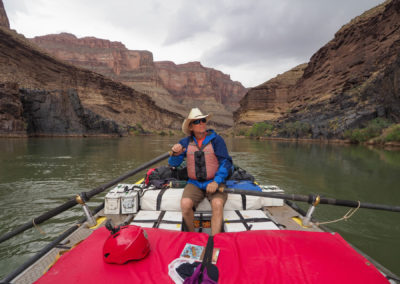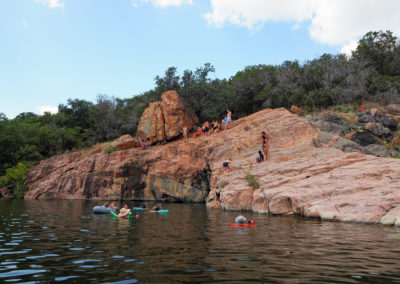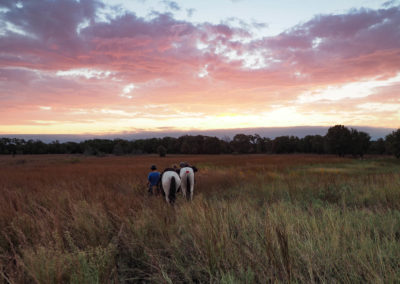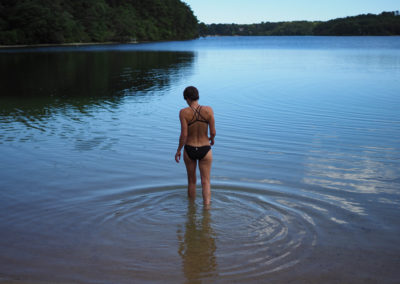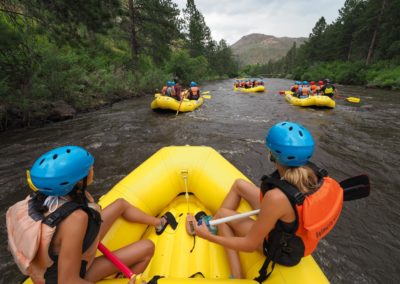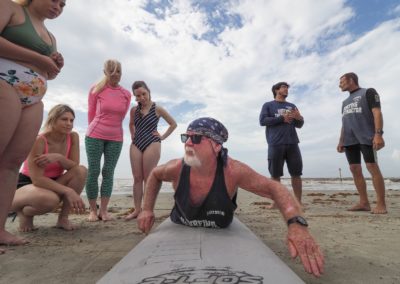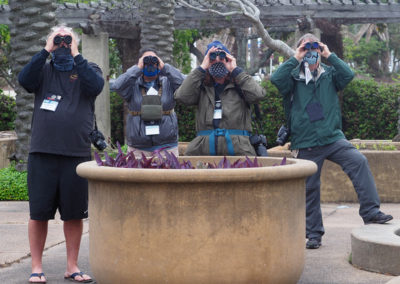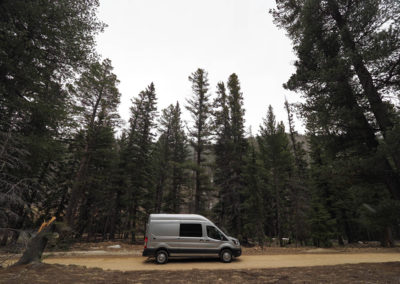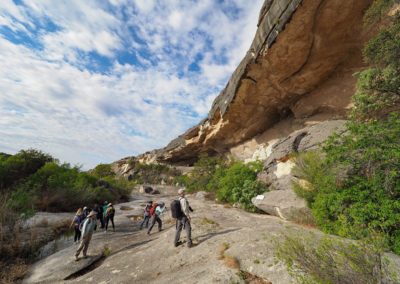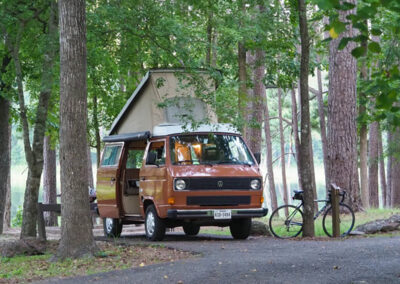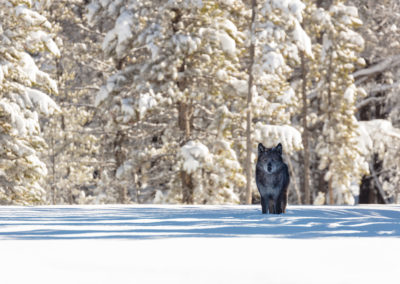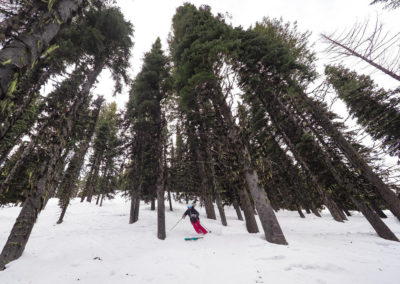
James McKay leads a small group on a coasteering adventure in Northern Ireland. Here, the group practices jumping off low rocks. Pam LeBlanc photo
I love leaping into rivers, lakes, and other wild bodies of water when I explore, but standing here along a rugged stretch of coastline in Northern Ireland, my teeth won’t stop chattering.
Below me, the Irish Sea is lapping against the surrounding cliffs in a steady slap, slap, slap. The water temperature is hovering just above 51 degrees, and even though I’m wearing two full wetsuits, I wonder if I’ll turn into a popsicle when I jump in.
But I’ve come to this windswept stretch of beach 30 miles southeast of Belfast to try a trendy sport called coasteering, so I tighten the strap of my helmet, secure my life vest, and channel my inner penguin.
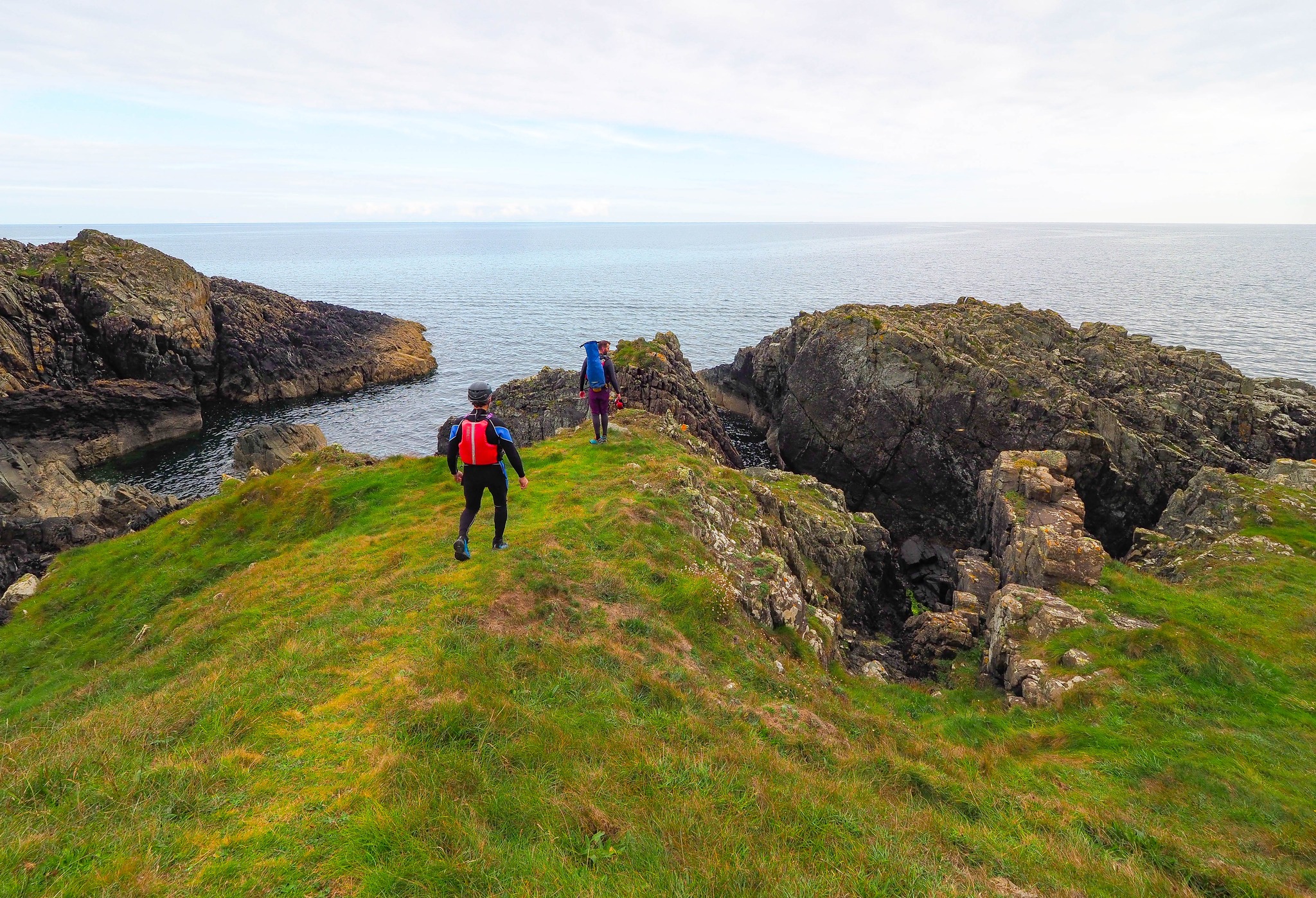
A group hikes along the coastline southeast of Belfast, preparing to jump into the Irish Sea. Pam LeBlanc photo
“Keep your eyes on the horizon,” coaches James McKay, an instructor with Clearsky Adventure Centre in Castle Ward, which organized this outing. He reminds me and my two fellow adventurers – both men – to resist the urge to run and jump off the cliffs. It’s better to step off carefully.
“Take a deep breath, and down you go,” he says. “You’ll sort of feel your stomach jump a wee bit.”
When coasteering in Ireland, start small
With that, I walk off a 3-foot ledge into water the color of a midnight sky. I’m so swaddled in neoprene that my head doesn’t even get wet. I bob like a cork, letting the icy water trickle down my neck and into my wetsuits.
Like canyoneering, coasteering involves scrambling, climbing, and jumping through a landscape. But while canyoneering takes place in water-filled canyons, coasteering unfolds along oceanside cliffs.
“It hits that adventure button for people, and it’s something they’re not going to do by themselves,” McKay says.
Read more: At Machu Picchu, a Lost City in the Andes Inspires a Traveler
It’s a relatively new outdoor activity in most parts of the world, too. The sport got its start in Wales in the 1980s, then spread to the UK.
“We’ve been aware of it for a long time,” McKay says. “We looked for somewhere that the cliffs are big and interesting enough but sheltered so you don’t get slammed on the rocks.”
They wound up in Ballyhornan, about 30 miles southeast of Belfast, where the public can access rugged cliffs and inlets near a picturesque beach. A barren chunk of land called Guns Island rises from the swirling water a quarter– mile offshore, setting a scene that probably hasn’t changed much since Vikings raided the coastline more than 1,200 years ago.
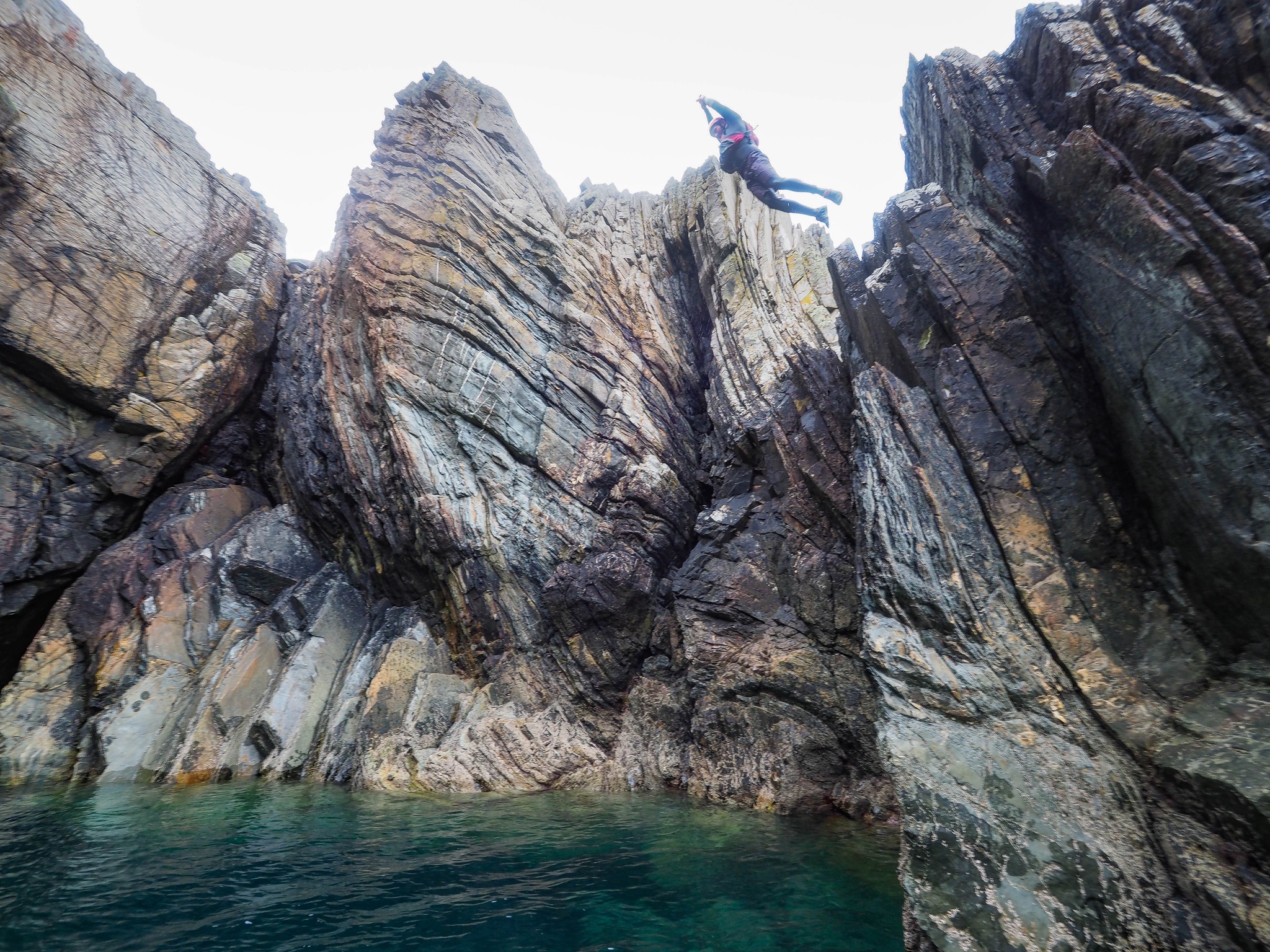
James McKay, an instructor with Clearsky Adventure Centre, jumps into the ocean southeast of Belfast. Pam LeBlanc photo
Brace for the cold
Coasteering season here runs generally from March through September, and it’s October when I make my visit. But even in mid-summer, McKay says, the water feels more like snowmelt than a tropical lagoon.
“Over here we’re used to that water temperature,” he tells me.
After my first jump, I scramble out of the water on my belly like a reptile and follow the two others to a slightly higher launch pad. This time, we leap off a Suburban-sized boulder. When it’s my turn, I again fold my arms across my chest and step into the water, sneaker-clad feet hitting first.
After we’ve logged two introductory jumps, McKay leads us to the next inlet, where wedges of rock the length of a basketball court jut into the ocean, creating deep channels. We scamper onto the cliffs, gradually working our way to higher and higher drop zones. Coasteering is a progressive sport, but there’s no pressure to go beyond your comfort level.
Going big
McKay and the other two climb past me and make their way to the edge. I watch as one, and then the other, steps into the blue, plummets 20 feet to the water’s surface, then pops up, laughing. They do it again, climbing 5 feet higher on the cliff wall. Then one does a back flip for good measure.
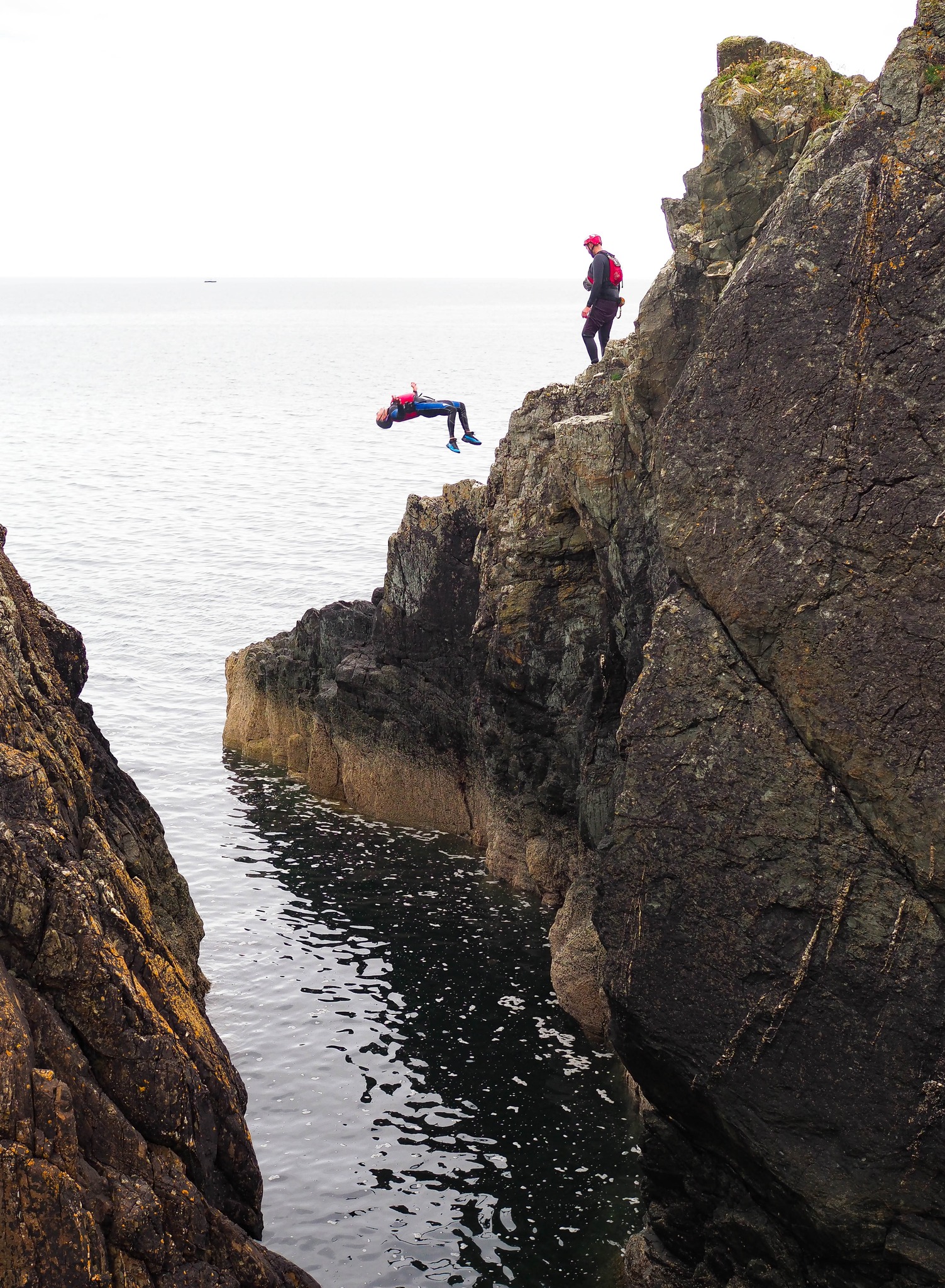
Eugene Buchanan does a back flip off a cliff southeast of Belfast in Northern Ireland. Pam LeBlanc photo
It all looks fun, but the safety guard inside my head is waving a yellow flag, urging me to take it slowly. I step to the edge of a lower section of the cliff, count down backward, and step into the abyss. Even that gives me an adrenaline bump.
“It’s not the fall you have to worry about, it’s the rapid deceleration,” McKay chuckles.
After a few rounds, we swim around a point of rock and into a protected amphitheater, surrounded on three sides by steep rock faces.
McKay points at a dark overhang. We paddle our way inside the opening, about the size of a single-car garage. For a moment I wonder what lurks farther back in the crevasse.
Read more: Riding Rocky Hill Ranch
Not even a long slimy tentacle reaches out, though, and after a few minutes, my thoughts calm. I float on the gently swelling water, peering out at the ocean like I’m looking through a window.
It’s wild and remote and beautiful and natural, and, for me, that’s the appeal. I’m comfortable. And, four hours into the adventure, I’m no longer thinking about the cold.

Coasteering is growing in popularity in Northern Ireland. Pam LeBlanc photo
If You Go

Getting there:
I flew American Airlines into Dublin. From there, you can rent a car and drive to Newcastle, close to the part of Ireland where coasteering is popular.

Stay:
I stayed at Slieve onard Hotel Newcastle.
Do:
Try coasteering with Clearsky Adventure Centre in Castle Ward. You’ll hike along a rocky cliff and jump into the Irish Sea.
Pro Tip:
If you’re thin and get cold easily, try wearing double wetsuits. That’s what I did and it kept me reasonably comfortable.










